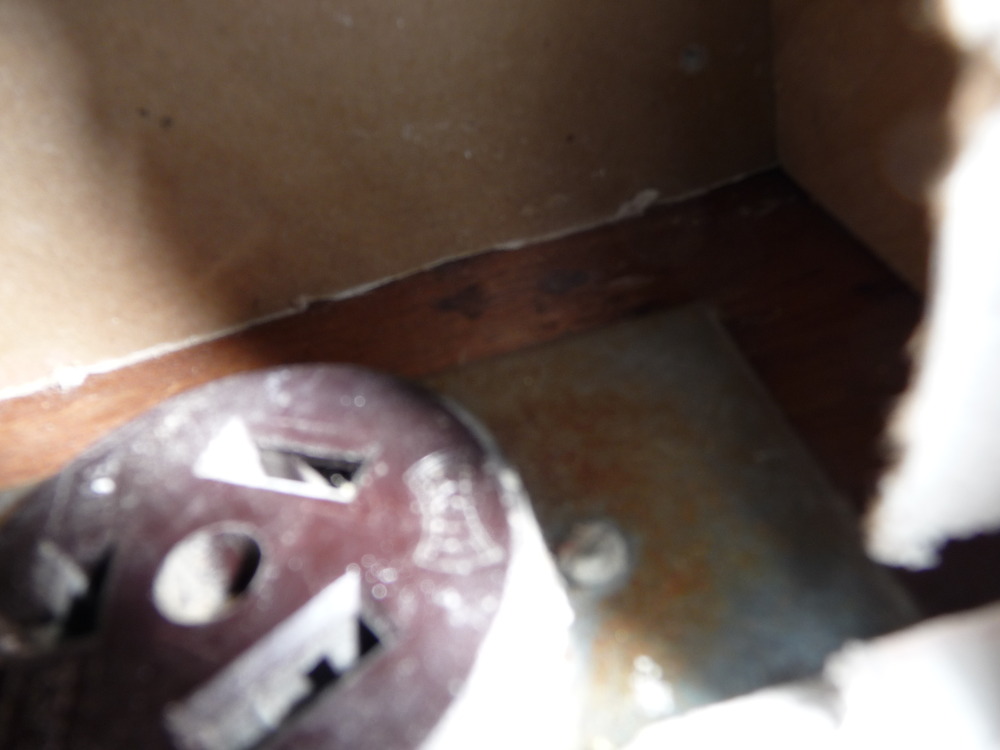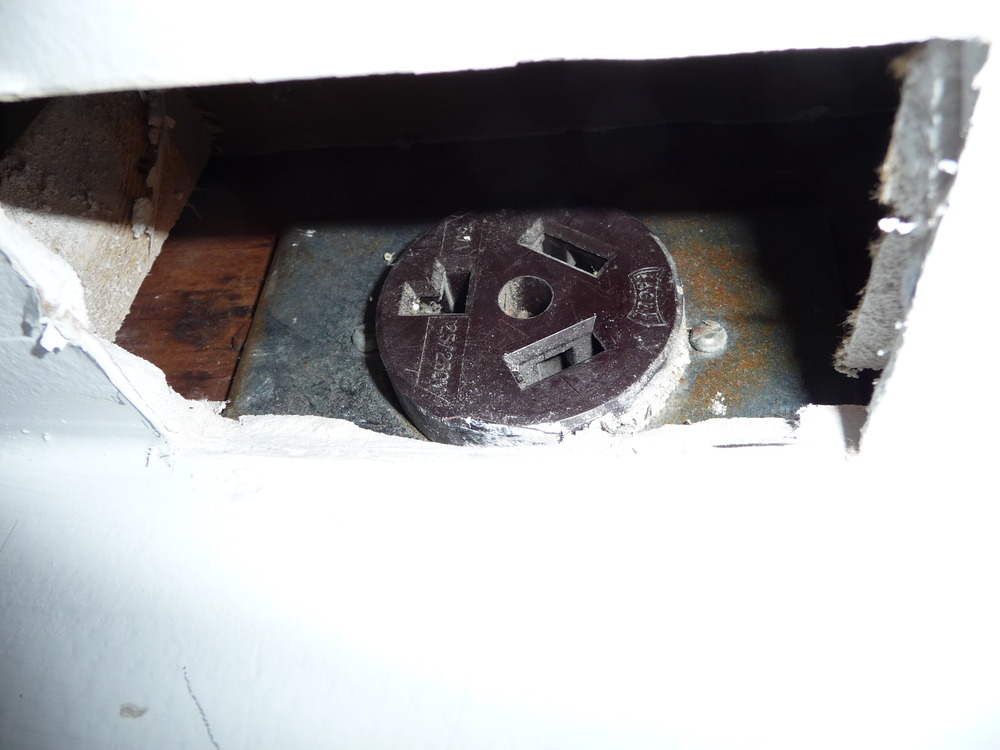|
Thread Number: 21158
240 Plug Doesn't Match Outlet |
[Down to Last] |

|
Post# 334340 , Reply# 3 3/8/2009 at 17:30 (5,521 days old) by goatfarmer  (South Bend, home of Champions) (South Bend, home of Champions) |
||
 | ||
Post# 334376 , Reply# 4 3/8/2009 at 20:32 (5,521 days old) by launderess  (Quiet Please, There´s a Lady on Stage) (Quiet Please, There´s a Lady on Stage) |
||
Could Be Wrong | ||
| Post# 334397 , Reply# 6 3/8/2009 at 21:09 (5,521 days old) by toggleswitch2 () | ||
|
ooopsie a linke helps! CLICK HERE TO GO TO toggleswitch2's LINK | ||
| Post# 334398 , Reply# 7 3/8/2009 at 21:10 (5,521 days old) by toggleswitch2 () | ||
|
Here is a 20a 110v outlet. Which do you have, either of these? CLICK HERE TO GO TO toggleswitch2's LINK | ||
| Post# 334399 , Reply# 8 3/8/2009 at 21:13 (5,521 days old) by toggleswitch2 () | ||
|
Let us know and we'll continue from that point. And rather than believe what a piece of paper may say, what does the nameplate or specs plate on the machine itself say? | ||
| Post# 334460 , Reply# 10 3/9/2009 at 09:36 (5,521 days old) by tuxedopoodle () | ||
|
PS To answer your exact question, neither of my outlets looks like the photos. The 110/20amp outlet is a regular outlet, just like ones for a lamp. The 220/30 amp is the four prong, really big kind. | ||
| Post# 334556 , Reply# 12 3/9/2009 at 17:00 (5,520 days old) by toggleswitch2 () | ||
|
LOL I have a nice new nick-name. THANKS FOR THAT. (No sarcasm intended)! :-P | ||
| Post# 334558 , Reply# 13 3/9/2009 at 17:14 (5,520 days old) by toggleswitch2 () | ||
|
Sir, Yes Sir! If the washer has a white and a black wire in its (flex)cord STOP!!! Do not pass "GO" do not collect $200. This most likely indicates a 110v (North American) voltage machine. We shall speak again...... | ||
Post# 334694 , Reply# 15 3/10/2009 at 10:54 (5,519 days old) by sudsmaster  (SF Bay Area, California) (SF Bay Area, California) |
||

Suggest you go to your local Home Depot or Lowe's and peruse the plugs/outlets to get an idea of which is meant for 220 and which is meant for 110. 220v 20 amp plugs/outlets are about the same size as a grounded 110v 15 20 amp plug/outlet, but the prongs are like mirror images. The type you have sounds like it has the flat prongs at right angles to each other. Because there are only three prongs, what you have is an ungrounded 220 volt plug. The two flat prongs each carry 110v that share 220v between them. The round prong is the neutral. The outlet on your wall is most likely a standard North American 30 amp 220v grounded outlet. One solution for you would be to get a splitter box that plugs directly into your wall outlet, with 15 or 20 amp 220v outlets on it that accept your machine plug. (the other outlet could be for a euro electric dryer). Alternatively, you could have someone qualified take apart the cord to the washer and find out if it has three or four wires. If four wires, you could rewire the cord to accept a four prong plug that could plug directly into your wall outlet, but it would be a good idea at that point to change the circuit breaker to 20 amps. | ||
| Post# 334696 , Reply# 16 3/10/2009 at 10:56 (5,519 days old) by tuxedopoodle () | ||
|
Oops. Forgot to provide this info. The manual says that the plug supplied with the machine is "intended for connection to a single-phase supply. The supply must be earthed." (I have no idea what this means.) | ||
Post# 335129 , Reply# 19 3/12/2009 at 15:08 (5,517 days old) by sudsmaster  (SF Bay Area, California) (SF Bay Area, California) |
||

One could easily determine if the round prong is setup for ground or neutral by looking at the color of the wire. White: neutral Green: ground My Miele washers are wired up with two hots and a neutral. Although Miele insists that grounding is mandatory, this is the way that all of them (and I have four) have been wired to run before I got them. In each case the ground wire has been left unconnected. I've also seen Asko washers here in the USA with the three prong plugs - but I didn't open any of them up to see if the round prong was connected to a white or a green wire. Obviously doing both a proper neutral and a proper ground would be a good idea. But the Mieles seem to run just fine with just two hots and a neutral. The ground is there obviously for safety - just in case there's a short or some other failure in the washer that could energize the chassis/outer cabinet/door metal. Since you have a four prong dryer outlet... it probably would be a good idea to put a four prong plug on the washer, either to plug directly into the wall outlet (big plug) or into a protected 20 amp four hole outlet on a splitter box. Again, to meet code the circuit breaker probably should be changed to 20 amps 220 volts. Your mileage may vary. | ||
Post# 337758 , Reply# 21 3/26/2009 at 01:16 (5,504 days old) by sudsmaster  (SF Bay Area, California) (SF Bay Area, California) |
||
 | ||
| Post# 339038 , Reply# 25 3/31/2009 at 11:31 (5,498 days old) by tuxedopoodle () | ||
|
Photo 2 receptacle (I hope this is working) 
| ||
| Post# 339039 , Reply# 26 3/31/2009 at 11:37 (5,498 days old) by tuxedopoodle () | ||
|
Photo 3 just in case the receptable wasn't clear (the outlet is on a proper wall, which got sheetrocked off from the closet, so we had to cut through for access--it may not be as funky as it looks--it is affixed to the wall) 
| ||
| Post# 339159 , Reply# 29 3/31/2009 at 21:50 (5,498 days old) by toggleswitch2 () | ||
|
~But I think you are telling me to put the green ground there (Yes to the "L" shaped prong) ~attach the other two hot wires to the two other prongs. BINGO! as we are all reassured it is definitely a 220v machine! | ||
Post# 339571 , Reply# 30 4/2/2009 at 15:55 (5,496 days old) by retro-man  (- boston,ma) (- boston,ma) |
||
|
Hey tux and tog Not to throw water on the fire but would not have it been easier to replace the receptacle than the plug? I have a 220V built in a/c unit that has the same configuration as the plug that was cut off. Those outlets are readily available. I just had this installed 2 years ago. Jon | ||

 Comes to the Rescue!
Comes to the Rescue!